| Pages:
1
2
3 |
VladimirLem
Hazard to Others
  
Posts: 204
Registered: 24-5-2010
Member Is Offline
Mood: Have no fear <Vlad> is here.
|
|
Hi guys
I have seen, that HMTD is pretty much unsensible against shock etc when it was only a bit wet of ethanol...
1-3% of ethanol should "stabilize" it enough...
But careful, if it is too wet it doesnt detonate...
|
|
|
hissingnoise
International Hazard
    
Posts: 3940
Registered: 26-12-2002
Member Is Offline
Mood: Pulverulescent!
|
|
| Quote: | I have seen, that HMTD is pretty much unsensible against shock etc when it was only a bit wet of ethanol...
1-3% of ethanol should "stabilize" it enough... |
That is a pretty unsafe assumption to make, considering ethanol's volatility . . .
|
|
|
VladimirLem
Hazard to Others
  
Posts: 204
Registered: 24-5-2010
Member Is Offline
Mood: Have no fear <Vlad> is here.
|
|
Quote: Originally posted by hissingnoise  | | Quote: | I have seen, that HMTD is pretty much unsensible against shock etc when it was only a bit wet of ethanol...
1-3% of ethanol should "stabilize" it enough... |
That is a pretty unsafe assumption to make, considering ethanol's volatility . . .
|
thats right...maybe you could take oil instead ethanol...i dont know
hm...i'm going to try this^^
|
|
|
hissingnoise
International Hazard
    
Posts: 3940
Registered: 26-12-2002
Member Is Offline
Mood: Pulverulescent!
|
|
If you have to use HMTD, it's essential that it be washed well several times with cold water and it's kind of worth noting that aluminium is
the only common metal it won't react with.
|
|
|
Lord Emrone
Harmless

Posts: 30
Registered: 5-2-2010
Member Is Offline
Mood: No Mood
|
|
If you, for whatever reason have to use peroxides, use drop-caps. Make a paper tube with ETN at the bottom, drop-cap attached to the top with fuse.
When fuse burns, cap drops and dets the ETN.
|
|
|
quicksilver
International Hazard
    
Posts: 1820
Registered: 7-9-2005
Location: Inches from the keyboard....
Member Is Offline
Mood: ~-=SWINGS=-~
|
|
When this thread was started the term "stability" was used as a root (via "stabilization"). I believe that stability is much less difficult to achieve
than a lowering of sensitivity. It is sensitivity that has made HMTD a "non-candidate" for industrial usage.
As a rhetorical question I have occasionally wondered why many folks insist on using a description of some materials as"unstable" when in fact they
are highly sensitive. Stability can be achieved through proper synthesis, appropriate storage conditions, yet it's sensitivity that has been the
contributor to problematic employment (or lack thereof).
|
|
|
Nu-ANFO
Harmless

Posts: 7
Registered: 13-5-2011
Member Is Offline
Mood: No Mood
|
|
I think add 10-20% AP to ANFO or ANNM will make AP more stable and make ANFO and ANNM cap sensitive. It's more safe than use very dry APAN alone. AP
some seem to disolve in nitromethane,i think add 5-10% NM to APAN is also more safe than use APAN alone and this will make APAN little more slurry and
more VOD .I have done some test with this. AP is not that bad if you handle it properly and do diferent test of it. The most i worry about AP is
electric static sensitive. We can't see static by our eyes so becarful with static. Making AP more slury or look wet with fuel oil or NM will make AP
less static sensitive.
|
|
|
VladimirLem
Hazard to Others
  
Posts: 204
Registered: 24-5-2010
Member Is Offline
Mood: Have no fear <Vlad> is here.
|
|

i dont know which many ANFO you make, but 10 up too 20 percent of the secondary explosive is waaay too many.......4 up to 5 -...should work...but 20?
That crap is expensive and at up to 20% it will be fuckin dangerous, i think...
|
|
|
The WiZard is In
International Hazard
    
Posts: 1617
Registered: 3-4-2010
Member Is Offline
Mood: No Mood
|
|
Quote: Originally posted by Bot0nist  | | Also, it isn't a very good primary. It is powerful, sure, but the physics of its explosion make it a poor initiator. There is a reason it has never
been considered for commercial use, even in war time. Only ever attractive to teens and jihadist, probably do to its retardedly simple synthesis.
|
Amen La Jihadist use another peroxide as a primary.
Decrease TATP's sensitivity? I would file this under —
The tiger does not change its stripes.
And by da — Dem pest'y Jihadist make TATP with the mindset
that — if it blows up — they will be met by Seven Virgins in
Heaven. What's in the back of your mind?!?
djh
----
Appeasers beleive that if you keep
throwing steaks to a tiger, the tiger
will become a vegetrarian.
Heywood Broun
|
|
|
Nu-ANFO
Harmless

Posts: 7
Registered: 13-5-2011
Member Is Offline
Mood: No Mood
|
|
20% AP to ANFO actually too much.Just 5-10% to increase sinsitivity ANFO cap sensitive and small diameter charge. APAN is not powerful powder-powder
binary explosive unless u make AN very fine powder. If add some 10% nitromethane to APAN it become very powerfull because it link AP to mix with AN
nicely(Add 1 or 2 % water too to desensitizing AP). I 've tried this before.It is considered to power of 75:25 ANNM. Nitromethane is fucking
expensive so i use APAN/NM for 100g charge or to boost ANFO
12:88:5:1 AP:AN:NM:water try this ha ha ha fucking powerful and can save a dollar of NM VOD is something 5000-6000m/s
|
|
|
vulture
Forum Gatekeeper
    
Posts: 3330
Registered: 25-5-2002
Location: France
Member Is Offline
Mood: No Mood
|
|
Erm, adding ammonium nitrate to AP to stabilize it?? You do realize that AN is acidic, right?
One shouldn't accept or resort to the mutilation of science to appease the mentally impaired.
|
|
|
AndersHoveland
Hazard to Other Members, due to repeated speculation and posting of untested highly dangerous procedures!
    
Posts: 1986
Registered: 2-3-2011
Member Is Offline
Mood: No Mood
|
|
Actually, one would think that acidity, in one way, may help to chemically stabilize organic peroxides, because hydrogen peroxide is more stable
against decomposition (it slowly breaks down into H2O and oxygen gas) under acidic conditions. In another way, however, acidity may promote hydrolysis
of the acetone peroxide with moisture, back into acetone and hydrogen peroxide.
Dangerously sensitive explosives can seem safe
Often compounds that seem not to be very sensitive, can nevertheless blow up for seemingly little reason. Even if you have experience that suggests
that something is not sensitive at all, that does not mean extreme caution should not still be used. For example, many experimenters have thrown
bottles of organic peroxide hard against pavement without any detonation. Even little static sparks directly on the compound have failed to detonate
it. Despite the seeming insensitivity, organic peroxides can still spontaneously explode when being handled.
This reasoning should extend to nitroglycerin. Even though it is fairly difficult to detonate, and can take impacts or burn without incident, does not
mean that it will not later explode for no reason when it is being gently handled.
The reasons for the great variability in initiating these compounds are subtle, but likely have to do with impurities, crystal formation,
envirormental humidity, and age of the compound. Extreme caution should always be used, as there is always the chance that unknown causes can result
in seemingly safe primaries exploding without warning. NG is fairly difficult to RELIABLY initiate, but it is NOT "reliably" resistant against
detonation. One tube of NG might not go off if thrown hard onto pavement, while another tube with a different batch, or the same batch that has sat
around for a year, may go off just by accidently tipping over and being jarred against the top of the table.
One should never assume that any primary is safe, whatever prior experience with the compound would suggest. One example is TrinitroAnaline. This is a
very insensitive explosive, and yet it has a seemingly unanticipated danger of spontaneous detonation in storage. This is caused by trace impurities
that act as reducing agents, initiating a chain reaction that eventually results in explosion.
One of the reasons for variable sensitivity in nitroglycerin, for example, is formation of tiny air bubbles that act to sensitize the liquid. Impact
as low as 20g/cm can detonate NG.
http://www.jstor.org/stable/97914
Be sure you know the proper precautions that need to be taken, and the things not to do, before working with any primary explosive. While an accident
might be unlikely, many younger people have suffered severe injuries (losing fingers, suffering permanent ear damage, or losing sight in an eye, and
even death).
One particular note, while acetone peroxide is very simple to prepare, it is one of the most dangerous primary explosives to handle, being far more
sensitive than nitroglycerine. A teenager in Sweden killed himself when handling a over a kilogram of this dangerous substance. Please never prepare
or store more than 2 grams of this substance (about the size of a large spoon full)!! Sometimes this substance can be thrown against a hard surface
without incident, while other times it can detonate when being cautiously divided with a thin plastic playing card.
[Edited on 18-5-2011 by AndersHoveland]
|
|
|
holmes1880
dushbag
Posts: 194
Registered: 13-12-2010
Location: http://highexplosivesforum.forumotion.com/
Member Is Offline
Mood: Egregious
|
|
I don't understand how these threads are tolerated. While at it, let's also purify mercury fulminate. Meh.
|
|
|
The WiZard is In
International Hazard
    
Posts: 1617
Registered: 3-4-2010
Member Is Offline
Mood: No Mood
|
|
Acetone Peroxide
Me The Analogue Guy again. I have a serious need to
find something in my files, while looking came across these
two and another that will have to wait.
Byda no doubt you will A- Astounded and B- Amazed —
too know who owns a copy of both the Davis and Hawkins
books mentioned. Time permitting on the morrow I'll see
whats worth scanning.
 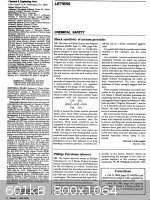
|
|
|
PHILOU Zrealone
International Hazard
    
Posts: 2893
Registered: 20-5-2002
Location: Brussel
Member Is Offline
Mood: Bis-diazo-dinitro-hydroquinonic
|
|
Peroxydes can also be stabilised by sodium stannate salt...We used this (in a hair cosmetic fabric where I have worked) as a stabiliser for peroxyde
hair decolourizing cremes made from H2O2 33% and a stiffening wax... to get a final product of 10% H2O2 content.
The gain of stability against heat and storage was very strong...
It is funny that stannous and stannic chlorides are used in the process of cyclotetraaceton peroxyde (CTeAP) what is reputed to be slightly more
stable than the cyclotriaceton peroxyde (CTAP) brother.
Maybe does the stabilisation come from the same effect as the stannate salt?
Stangely Na stannate is quite basic and holds a transition metal in it I had thought it would make the H2O2 less stable...but it seems to make a
complexation or a radical scavenging of the peroxyde...
It is something on my to do list to test.
[Edited on 18-5-2011 by PHILOU Zrealone]
PH Z (PHILOU Zrealone)
"Physic is all what never works; Chemistry is all what stinks and explodes!"-"Life that deadly disease, sexually transmitted."(W.Allen)
|
|
|
The WiZard is In
International Hazard
    
Posts: 1617
Registered: 3-4-2010
Member Is Offline
Mood: No Mood
|
|
Quote: Originally posted by The WiZard is In  | Me The Analogue Guy again. I have a serious need to
find something in my files, while looking came across these
two and another that will have to wait.
Byda no doubt you will A- Astounded and B- Amazed —
too know who owns a copy of both the Davis and Hawkins
books mentioned. Time permitting on the morrow I'll see
whats worth scanning.
|
Well .... Hawkins is just a bunch of chemistry and all I ever get
is complaints that I post toooo much... so I won't take the
time to scan it.
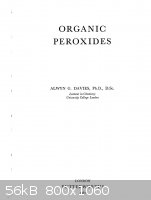 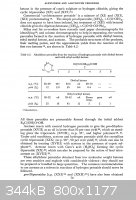 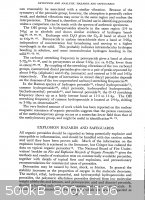 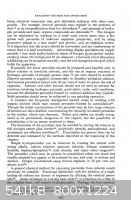 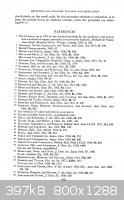  
Criegee has collated the data on typical organic peroxides. [74]
[74] Criegee, Methoden der Organischen Chemie
(Houben-Weyl). Tbhieme, Stuttgart, 1952, 8, 844
Reproduced by Tobolsky and Mersobian, Organic Peroxides,
Interscience, New York, 1954, pp. 177-180.
Once again no doubt you will be A&A'd to know who shelves this
book. I have things of use upon me to be a doing, it is on my
do it latter list.
|
|
|
The WiZard is In
International Hazard
    
Posts: 1617
Registered: 3-4-2010
Member Is Offline
Mood: No Mood
|
|
Quote: Originally posted by PHILOU Zrealone  | Peroxydes can also be stabilised by sodium stannate salt...We used this (in a hair cosmetic fabric where I have worked) as a stabiliser for peroxyde
hair decolourizing cremes made from H2O2 33% and a stiffening wax... to get a final product of 10% H2O2 content.
The gain of stability against heat and storage was very strong...
It is funny that stannous and stannic chlorides are used in the process of cyclotetraaceton peroxyde (CTeAP) what is reputed to be slightly more
stable than the cyclotriaceton peroxyde (CTAP) brother.
Maybe does the stabilisation come from the same effect as the stannate salt?
Stangely Na stannate is quite basic and holds a transition metal in it I had thought it would make the H2O2 less stable...but it seems to make a
complexation or a radical scavenging of the peroxyde...
It is something on my to do list to test.
[Edited on 18-5-2011 by PHILOU Zrealone] |
Stannous chloride.
This from Hawkins.
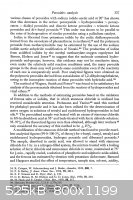
|
|
|
The WiZard is In
International Hazard
    
Posts: 1617
Registered: 3-4-2010
Member Is Offline
Mood: No Mood
|
|
Quote: Originally posted by PHILOU Zrealone  | Peroxydes can also be stabilised by sodium stannate salt...We used this (in a hair cosmetic fabric where I have worked) as a stabiliser for peroxyde
hair decolourizing cremes made from H2O2 33% and a stiffening wax... to get a final product of 10% H2O2 content.
The gain of stability against heat and storage was very strong...
It is funny that stannous and stannic chlorides are used in the process of cyclotetraaceton peroxyde (CTeAP) what is reputed to be slightly more
stable than the cyclotriaceton peroxyde (CTAP) brother.
Maybe does the stabilisation come from the same effect as the stannate salt?
Stangely Na stannate is quite basic and holds a transition metal in it I had thought it would make the H2O2 less stable...but it seems to make a
complexation or a radical scavenging of the peroxyde...
It is something on my to do list to test.
[Edited on 18-5-2011 by PHILOU Zrealone] |
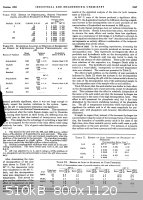 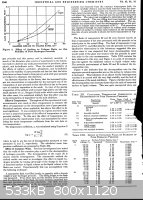  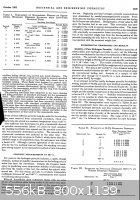 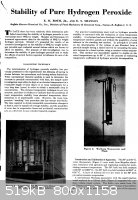 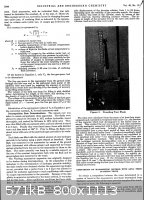 

|
|
|
PHILOU Zrealone
International Hazard
    
Posts: 2893
Registered: 20-5-2002
Location: Brussel
Member Is Offline
Mood: Bis-diazo-dinitro-hydroquinonic
|
|
Thanks "The WiZard is In" it is nice to have you here...Don J Haarmann (djh)
I suppose you did left Alt.engr.explosive forum because it was not popular anymore?
BTW why did you change your pseudo during the transition?
Anyway, we must be a few of the old chaps from AEE.
Your information is as usual very valuable.
I think the documents you have provided about Na stannate stabilisation of H2O2 are very good...too bad they didn't investigate further...
We used much more than 70ppm (between 500 and 1000 ppm (0.5-1g/kg)) and the pH was lower than 5 (6.5-8)
About the cyclotetraaceton peroxyde (CTeAP), it is made via catalysis with some SnCl2 (or better SnCl4) with HCl. It is logical that being a higher
multimer than cyclotriaceton peroxyde (CTAP) it must be of equaly or higher thermal (shock/friction) stability (this rule is observed for a variety of
explosive stuffs)...probably because longer molecules have much more heat dissipating modes on a molecular level).
The finders of CTeAP (it is mixed with a little CTAP), mentionned it is significantly more stable towards heat and shock... but I wonder if the
stability doesn't come from the presence of traces of Tin/Stannum into the mix.
[Edited on 26-5-2011 by PHILOU Zrealone]
PH Z (PHILOU Zrealone)
"Physic is all what never works; Chemistry is all what stinks and explodes!"-"Life that deadly disease, sexually transmitted."(W.Allen)
|
|
|
The WiZard is In
International Hazard
    
Posts: 1617
Registered: 3-4-2010
Member Is Offline
Mood: No Mood
|
|
Quote: Originally posted by PHILOU Zrealone  | Thanks "The WiZard is In" it is nice to have you here...Don J Haarmann (djh)
I suppose you did left Alt.engr.explosive forum because it was not popular anymore?
BTW why did you change your pseudo during the transition?
Anyway, we must be a few of the old chaps from AEE.
Your information is as usual very valuable. |
Some years back I retired and move out here in the country
with the cows. My fastest dial up speed was 24K, the RBOC
told me I was lucky to get dial tone so I switched
to Hughes Net satellite service, which I am happy to report has
gotten a lot more reliable/faster. H. Net does not support
newsgroups, leaving Deja.com as only free access. It is more
bother then worth.
Don't be remembering why I dropped donald j haarmann
for The WiZard is In. Occasionally — Mr. Emous - Emous, Anon -
Anon Emous.
Then there was a time when someone had the bright idea that
if they loaded tons of junk posts to rec.pyrotechnics,
alt.engr.explosive, sci.chem &c., someone would pay them to
stop.
|
|
|
Rosco Bodine
Banned
Posts: 6370
Registered: 29-9-2004
Member Is Offline
Mood: analytical
|
|
The tetrameric acetone peroxide gotten by use of the stannous or stannous chloride catalyst was done in absence of any added free HCl although surely
some low amount of HCl would be present due to hydrolysis. EDTA could also be reportedly used as a catalyst.
|
|
|
The WiZard is In
International Hazard
    
Posts: 1617
Registered: 3-4-2010
Member Is Offline
Mood: No Mood
|
|
Quote: Originally posted by PHILOU Zrealone  | Thanks "The WiZard is In" it is nice to have you here...Don J Haarmann (djh)
I suppose you did left Alt.engr.explosive forum because it was not popular anymore? |
I have used The WiZ off/on since my first column in American
Fireworks News #15 October, 1982. NB - Note capitalization.
djh
----
 
|
|
|
The WiZard is In
International Hazard
    
Posts: 1617
Registered: 3-4-2010
Member Is Offline
Mood: No Mood
|
|
Quote: Originally posted by BASF  | | I want to start a little project on stabilization of organic peroxides like acetone peroxide or hmtd. |
Will this work for acetone peroxide.....?
Byda benzol peroxide was once used by the really brave for
movie Special F/X. Leaving it sitting out in the sun on a hot
day was considered a really bad idea.
From :—
Tobolsky & Mesrobian
Organic Peroxides
Interscience 1954
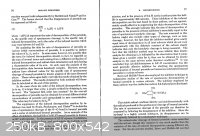
|
|
|
Rosco Bodine
Banned
Posts: 6370
Registered: 29-9-2004
Member Is Offline
Mood: analytical
|
|
There is no need to stabilize trimeric or tetrameric acetone peroxide, they are already stable. They are sensitive explosives yes indeed, and so are
many other explosve materials which are also quite chemically stable absent the requisite stimuli which will cause their explosive decomposition.
However, instability has the property of a gradual decomposition at ordinary temperature which must
be counteracted by some sort of stabilizer which interferes with and slows the
gradual decomposition. Such is not the case for trimeric or tetrameric acetone peroxide. Explosive is not at all equal to "unstable". For example
silver fulminate
is quite dangerously sensitive and quite explosive, yet is also quite stable in the absence of those stimuli as would cause its explosion.
|
|
|
AndersHoveland
Hazard to Other Members, due to repeated speculation and posting of untested highly dangerous procedures!
    
Posts: 1986
Registered: 2-3-2011
Member Is Offline
Mood: No Mood
|
|
While Rosxo Bodine is making an excellent point that the proprty of stability is different from sensitivity, I would like to share
some observations dealing specifically with acetone peroxide.
If the wet precipitate that forms on the surface is carefully scooped off, and the solid placed in a container for six months, the solid appears to
separate out, leaving mostly liquid, with a portion of solid remaining on the bottom which occupies a volume which is only a small fraction of the
original solid. I suspect that the compound is actually not chemically stable in long term storage. There will inevitably be some hydrolysis
to acetone and hydrogen peroxide, the latter of which will very slowly attack the acetone through a spontaneous radical cascade mechanism.
For example, although H2O2 generally does not oxidize sugar, solutions of the two are not stable in storage and there is inevitably some oxidation,
the rate of which rapidly increases with traces of iron ions or exposure to light.
Also, hexamethylene triperoxide diamine (HMTD) is not chemically stable, in addition to being very sensitive. It degrades after several
months in storage to the point that it becomes impossible to detonate. Although supposedly, if the compound is free from traces of acid there is no
degredation.
[Edited on 26-5-2011 by AndersHoveland]
|
|
|
| Pages:
1
2
3 |